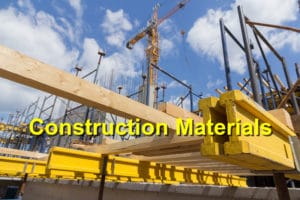Building your dream home is an exciting journey filled with anticipation, creativity, and important decisions. Residential construction projects require careful planning and collaboration to ensure the finished result meets both your vision and practical needs. Whether you’re building from scratch or expanding an existing space, understanding what to expect can make the process smoother and less stressful.
Here’s a breakdown of the essential steps and considerations involved in residential construction.
1. Planning and Design
Every successful home begins with a detailed plan. During this phase:
- You’ll work with architects or design firms to create a blueprint that reflects your lifestyle, budget, and style preferences.
- Decisions about layout, room sizes, energy efficiency, and materials are made.
- Regulatory requirements and permits are factored into the design.
Thorough planning ensures fewer changes and smoother progress once construction begins.
2. Budgeting and Financing
Budgeting is one of the most critical aspects of building a home. Expect to:
- Outline costs for materials, labor, permits, and unexpected contingencies.
- Secure financing through mortgages, construction loans, or personal funds.
- Balance your wishlist with realistic financial limits.
Having a clear budget upfront helps avoid unpleasant surprises later.
3. Site Preparation and Foundation
Before the structure rises, the site must be prepared. This includes:
- Clearing and grading the land.
- Installing utilities like water, sewer, and electricity.
- Laying the foundation, which is essential for long-term stability.
This stage is vital for ensuring your home is built on a strong and secure base.
4. Framing and Structural Work
The framing stage brings your vision to life:
- Walls, floors, and roof structures are built.
- Openings for doors and windows are created.
- The layout of your home becomes clearly visible.
This phase sets the stage for interior and exterior finishes.
5. Mechanical, Electrical, and Plumbing (MEP)
Behind-the-scenes systems are installed during this phase:
- HVAC systems for heating and cooling.
- Electrical wiring and outlets.
- Plumbing for bathrooms, kitchens, and laundry.
Proper installation here ensures your home is safe, comfortable, and efficient.
6. Interior and Exterior Finishes
This is where personalization shines. Expect to select:
- Flooring, cabinetry, and countertops.
- Paint colors, fixtures, and lighting.
- Exterior siding, roofing, and landscaping.
These finishing touches turn the structure into a comfortable and stylish living space.
7. Final Inspections and Move-In
Before moving in, inspections confirm everything meets building codes and safety standards. Once approved:
- Final walkthroughs help address any last-minute adjustments.
- Keys are handed over, and your dream home is ready.
Conclusion
Residential construction projects are exciting but also complex. By understanding each step—from planning and budgeting to finishes and inspections—you’ll feel more confident and prepared throughout the process. In 2025, advancements in sustainable materials and smart home technology are enhancing residential construction even further, giving homeowners more options than ever to create their perfect home.
With the right planning and the right team, you can turn your vision into a reality and enjoy a home that reflects your lifestyle and values for years to come.
References: Nationwide Construction




